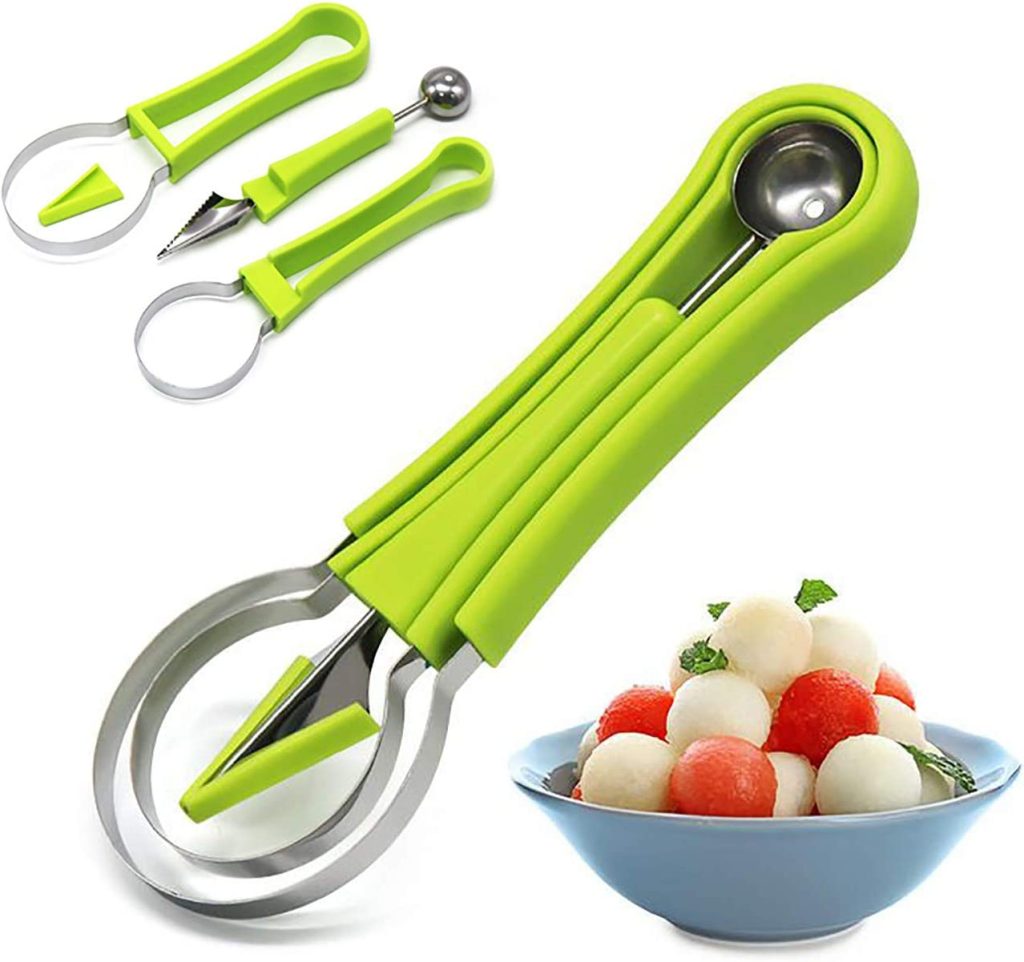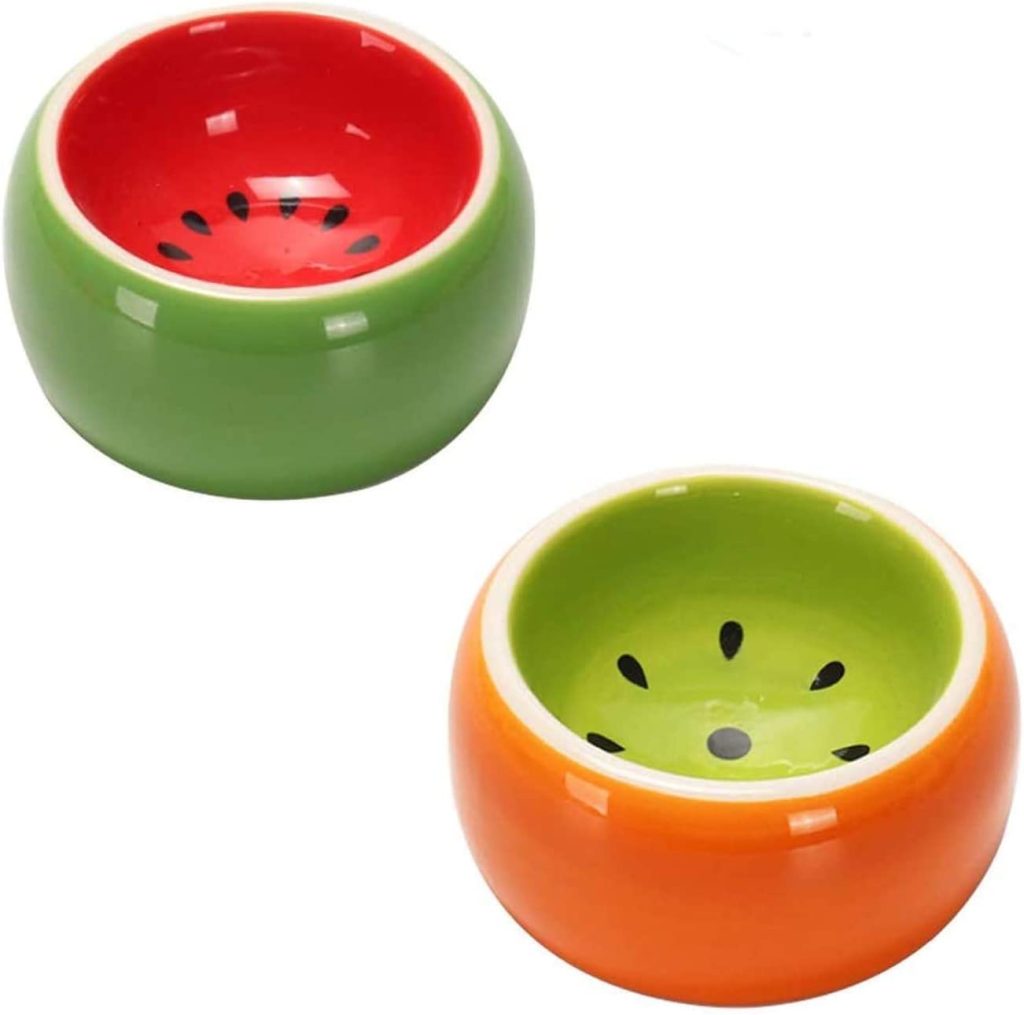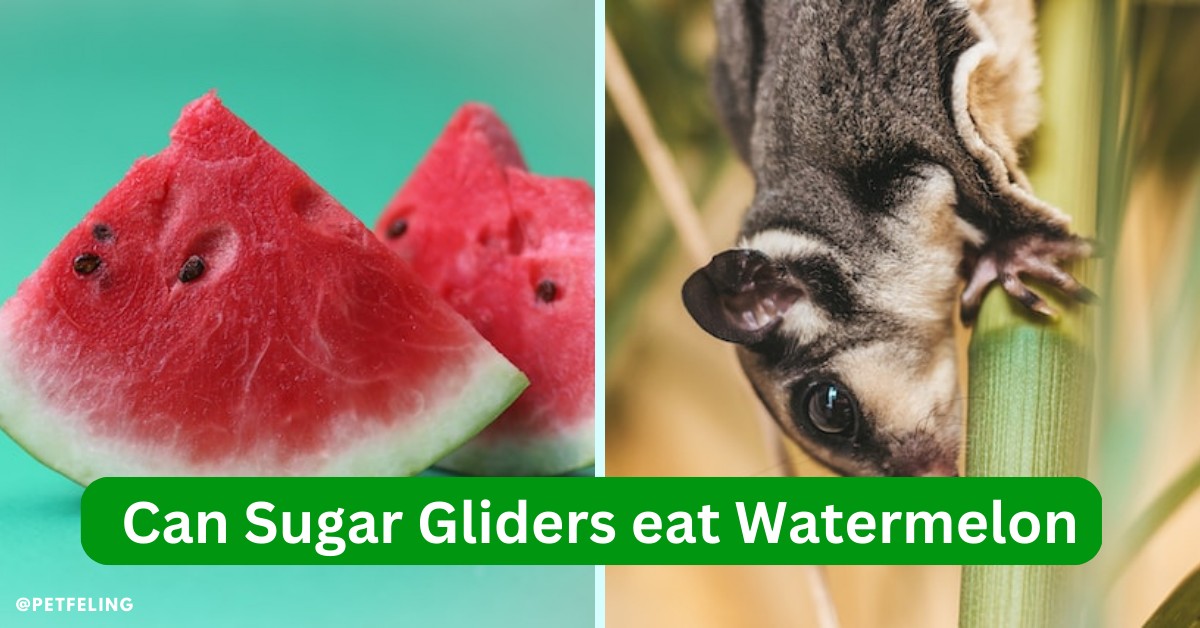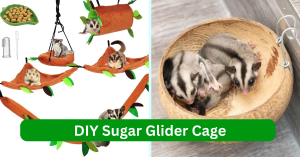People who desire to own an exotic pet for themselves do exist, though. The finest options for terrestrial exotic pets, in my opinion, are sugar gliders. They are adorable, little, and wonderful company. They enjoy spending time playing with you and are also quite social with everyone. They provide you with a lot of options when it comes to feeding them because they are omnivores. What about watermelons, though?
A cool and delicious watermelon meal is one of the nicest things you can do on a hot summer day. Watermelon has many health advantages for humans in addition to being delicious and refreshing. We should assume that our sugar gliders would also enjoy watermelon if we did. Although you can feed your sweeties most fruits and vegetables, it is always a good idea to be sure they can consume a new meal before you offer it to them.
Is watermelon safe for sugar gliders? It’s simple and quick to say that sugar gliders can consume watermelon. But it’s preferable not to give them the rind and seeds.
In this article, we attempt to simplify things for you by thoroughly addressing the topic, “Can sugar gliders eat watermelon?” and assisting you in determining all of the pertinent information. So, let’s get going.
Can Sugar Gliders eat watermelons?
They can consume watermelons without risk. In fact, they adore it tremendously because they are sugar addicts. Watermelons are filled with additional nutrients in addition to their high-water content. It would be wise to include these in your pet Sugar Glider’s daily diet. They should just avoid eating the rind and seeds of the watermelon. Although Sugar Gliders have a wide range of food preferences, their tiny size can be a challenge for their owners. It is very simple to overfeed them, and everything poisonous they consume has the potential to have a negative impact on their health, even in very small doses. Before introducing them into your home as pets, it is important to understand their dietary requirements.
All of your questions about feeding watermelons to sugar gliders will be addressed in this article.
Can Sugar Glider Joeys Eat Watermelons?
“Joeys” are the term used to describe the younger sugar gliders. They mostly eat milk produced by female sugar gliders. If you have a Joey as a pet, you should start by giving it milk substitute. They should not be weaned from milk until they are at least 8 weeks old. Following that, you can include watermelons and other fruits and vegetables in their daily diet. They become less choosy eaters as they age if you give them a variety of fruits and vegetables while they are small. Joeys, on the other hand, require extra caution when it comes to the quantity of melons you give them. Most of the time, overfeeding Joeys has been an issue.
Do Sugar Gliders Like Eating Watermelons?
It is only normal for you to wonder if your pet sugar glider will enjoy eating watermelons before you give them to them. Watermelons are a favorite food of Sugar Gliders. After all, watermelons are sweet, juicy fruits, and their nickname of “Sugar gliders” is not an accident. These cute, tiny animals are known for being finicky eaters, though. Thus, there is a remote possibility that they won’t consume it. The only way to determine that is to attempt to feed them melons two or three times and observe how they react. They won’t touch it, so you’ll know the answer.
Are Watermelons Healthy for Sugar Gliders?
We may discuss the health advantages of watermelons for your pets after you have determined whether or not your pet Sugar Gliders enjoy eating watermelons. Sugar gliders are tiny creatures with a tiny diet. As a result, it’s crucial to include all the nutrients they require in their diet and to avoid giving them anything that won’t improve their health.
Vitamins
Sugar Gliders do not require vitamin C because they can produce it on their own. However, they obtain the remaining vitamins, including A, B-complex, D, E, and K, from food. Watermelons have the highest concentrations of these four vitamins—A, E, and B complex—as well as thiamin, pantothenic acid, pyridoxine, folates, and niacin, all of which are essential for human nutrition.
Calcium
Calcium, a vitamin that is very important for the health of Sugar Gliders, is also abundant in watermelons. The majority of sugar gliders kept in captivity appear to have a calcium deficit that causes their bodies to start leaching calcium from their bones. It is crucial to supplement their diet with enough calcium as a result.
Protein
In the bodies of Sugar Gliders, protein also serves a variety of purposes, including ensuring that liver and kidney processes run without interruption, healing injured tissues, and preserving hormonal balance. The 0.7 grams of protein in 100 grams of watermelon are more than adequate for your animal companion.
Water
Since your small pets require a lot of water to stay hydrated, the fact that watermelons are over 90% water is crucial. We now know that watermelons are quite healthy for Sugar Gliders and can be included in their regular diet as a result.
Can I Feed My Sugar Gliders Watermelon Seeds and Rinds?
When feeding sugar gliders fresh produce, the general rule to abide by when it comes to the various portions of fruits and vegetables is: if you eat it, they can eat it too. Take the time to remove the black and white seeds from the watermelon before serving it to your curious friends, because most people don’t eat watermelon seeds. Depending on how you define safety, watermelon seeds may or may not be okay for your pet sugar glider. It is true that watermelon seeds don’t contain any toxic substances that are harmful to your pet’s health, in contrast to apple seeds. However, there is a chance that your pet could ingest these seeds and suffocate.
Animals like sugar gliders are perceptive and intelligent, and they steer clear of potentially harmful foods. With pets, especially ones that are as little and delicate as sugar gliders, you can never be too secure. Some sugar glider owners, however, take a chance and feed their gliders sliced watermelon with seeds. Since sugar gliders typically eat around the seeds, they typically report no issues. The rind, however, tells a different tale. Pesticides can do serious harm to your beloved animals. It is best to peel all fruits and vegetables before consuming them. If that isn’t possible, spend some time washing it very thoroughly.
Since many people are not used to washing a complete watermelon, it is preferable to develop the habit of first removing the red meat from the rind. By doing this, you can avoid accidentally giving your suggestions something dangerous. Even though your pet sugar gliders can eat the watermelon rind, it might not be a good idea to do so for two reasons.
- The first reason is because there are more fibers in the watermelon rind than your small pets’ digestive systems can handle. If they consume them, they can experience gastrointestinal problems.
- The second reason is that even for humans, the rinds are just too tough. Even if your animal companion is successful in eating some, it might upset their stomach. As a result, you should prevent them from eating any watermelon greens.

What Else Should I Know About Sugar Gliders Eating Watermelon?
It’s crucial to avoid feeding your sugar glider a diet that is mostly composed of a single fruit or vegetable. Sugar gliders consume a wide range of foods in the wild, including numerous fruits, vegetables, and insects. To suit their nutritional demands, they switch between a variety of foods every week. Sugar gliders don’t obtain all the nutrients they require to be happy and healthy from watermelon or any other fruit or vegetable offered in captivity. When you do give your adorable friends watermelon, make sure they don’t get too much of it.
Even though most sugar gliders adore watermelon, it’s okay if you have the occasional one who doesn’t. We’ve all encountered people who dislike the dishes we enjoy most. Similar to humans, sugar gliders have been known to be finicky eaters. Try feeding your sugar gliders watermelon multiple times before giving up on the idea. Many sugar gliders require repeated exposure to a new food before they even attempt it. Squash the watermelon just enough to release more sweet-smelling juice, which will make it much more alluring.
Some owners of sugar gliders make an effort to keep the calcium-to-phosphorus ratio in their suggies’ food at 2:1. If this is you, remember to factor in the extra watermelon when figuring out your ratio of adorable sugar gliders.

Serving Ideas
Cutting off the rind is the first step in feeding watermelons to sugar gliders. After removing all of the watermelon’s greens, begin by chopping the inside flesh into smaller pieces. Remove every single seed you can locate, both white and black, with care. You can now feed your small pets these cubes. Melons can be given to your sugar gliders in a serving dish or by hand-feeding them. The latter will get better results from your pet. Cutting off the rind is the first step in feeding watermelons to sugar gliders. After removing all of the watermelon’s greens, begin by chopping the inside flesh into smaller pieces. Remove every single seed you can locate, both white and black, with care. You can now feed your small pets these cubes. Melons can be given to your sugar gliders in a serving dish or by hand-feeding them. The latter will get better results from your pet.
Conclusion
Can sugar gliders eat watermelon? What about watermelon seeds and rind? In a word: Yes! Sugar gliders can eat watermelon but be sure to remove the seeds and cut the rind off before you serve it to them. If your suggies don’t like watermelon, don’t fret. Not every sugar glider will go crazy for watermelon. Though most will love it! Always, keep track of your sugar baby’s overall calcium to phosphorus ratio. Additionally, if you have any other fruits at home and are in the mood to be inventive, you may chop them up into little pieces and combine them to give your pets a fruit salad. Keep in mind that adding salt or other spices won’t improve the flavor of the salad. They will adore it exactly as it is.
FAQ Section
What other fruits can I safely give my sugar gliders besides watermelons?
The Sugar Glider’s diet is largely composed of fruits and vegetables. Fruits including avocados, bananas, sweet corn, grapes, figs, pineapples, pears, apples, peaches, mangoes, oranges, grapefruits, sweet potatoes, and others are okay to give them.
What treats can I give my sugar glider?
Be ready to catch some live insects if you wish to treat your pet Sugar Gliders. Mealworms, earthworms, crickets, and other live insects are all favorites of sugar gliders. Make sure they are not tainted with pesticides when gathering insects, though. Your small pets’ health may suffer if they eat these insects.
Which fruit is ideal for sugar gliders?
Apple, strawberries, raspberries, blueberries, blackberries, mangoes, and papayas are examples of healthy fruits. Try not to serve the same fruit every night; variation is key to obtaining a good nutritional balance. Every night, each sugar glider needs around a spoonful of fruits and vegetables.



